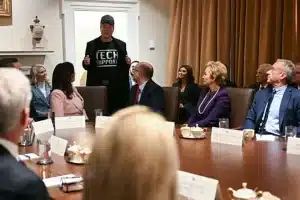General Motors’ (GM) self-driving taxi unit, Cruise, has “recalled” its fleet of vehicles following a viral crash with a bus earlier this week.
Automakers worldwide are investing billions into autonomous driving, and while Tesla and Mercedes are currently the clear leaders, other top brands, including Ford, Hyundai/Kia, and GM, have also entered the mix. For GM, that comes in the form of its level 3 autonomous taxis serving the San Francisco area under the brand name Cruise. However, in this effort, there have been a few hurdles, and earlier this week, Cruise was forced to introduce a fleet-wide OTA update recall to fix an issue that made the company go viral.
As initially reported by Reuters, the Cruise robotaxi that has gained so much notoriety over the past week collided with a San Francisco bus, injuring nobody but causing minor damage to the Cruise vehicle. Now, to ensure this issue doesn’t reappear, Cruise issued an OTA update, stating that the vehicle had incorrectly predicted the movement of the bus in front of it.
The details of this week’s crash were outlined in a blog post from Cruise CEO Kyle Vogt. According to Vogt, the bus had driven in front of the Cruise vehicle roughly one block earlier, and the taxi followed the bus, continuing its pre-existing route. The robotaxi made an error when the bus stopped abruptly, which resulted in the autonomous vehicle colliding into the back of it at roughly ten mph.
The recall issued by the company affects all 300 of its vehicles, and according to the CEO, it will ensure that this rare situation doesn’t happen again.
“Fender benders like this rarely happen to our AVs,” began Vogt, “but this incident was unique. We do not expect our vehicles to run into the back of a city bus under any conditions, so even a single incident like this was worthy of immediate and careful study.”
Luckily, as noted by the CEO, this occurrence is quite rare, with the last time it happened being in early 2022. Nonetheless, Vogt states that this is only more reason to double down on safety and improve the product.
“The process we followed, in this case, is just one example of our commitment to safety and our ability to rapidly diagnose, react to, and remedy any issues we may encounter,” continued the Cruise CEO. “We will undoubtedly continue to discover ways in which we can improve, even if that involves changing software that is currently deployed in the field. We think any potential improvement to roadway safety is worthwhile, and we will approach it with the same level of rigor as we’ve demonstrated here. These continuous improvements are likely to make voluntary recalls commonplace.”
As for GM, the progress made by Cruise may become significantly more valuable as it plans to introduce more vehicles shortly capable of using its level 2 “SuperCruise” autonomous driving system. And while these products will be far from the capabilities of the Cruise taxis in California, they can serve as a taste of what is to come as America’s largest automaker continues to work on AV improvement.





